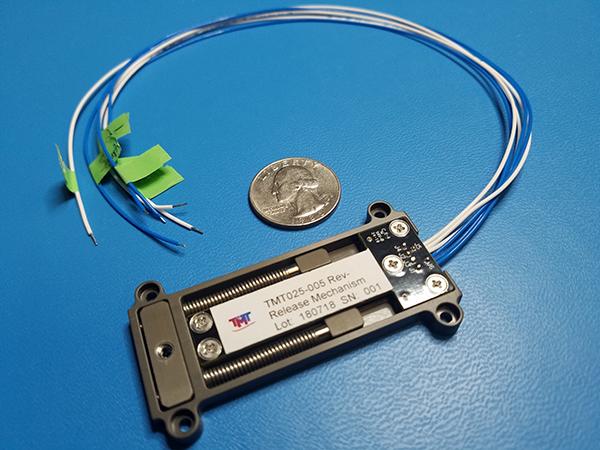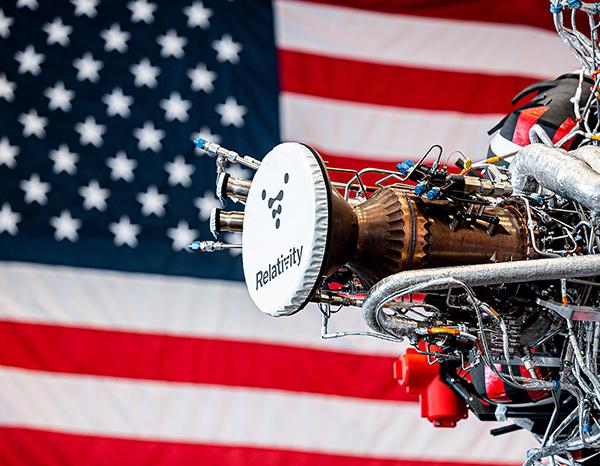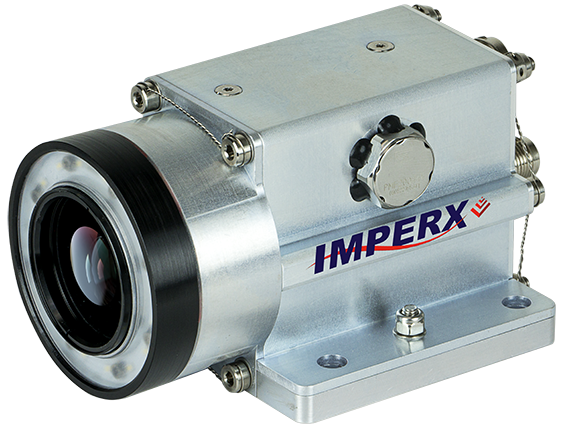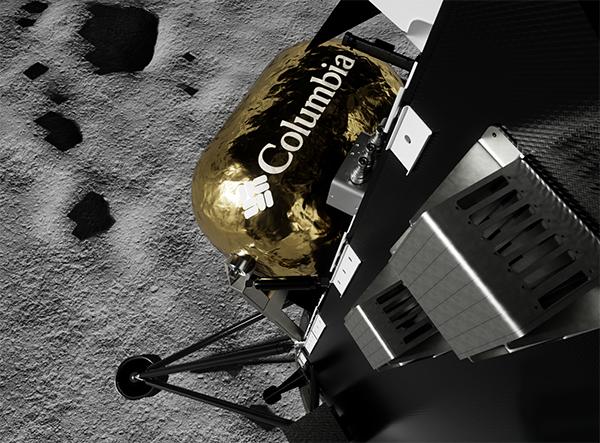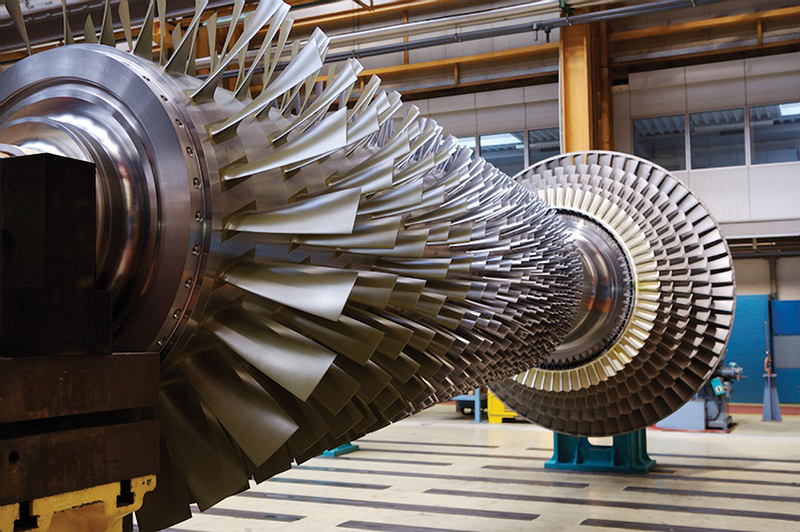
Coatings Extend Life of Engines and Infrastructure
Originating Technology/NASA Contribution
Every time a jet engine is started, it goes through a thermal cycle of extreme temperatures, reaching as high as 2,700 °F within the engine’s combustor. Over time, the expansion and contraction of engine parts caused by this cycle lead to cracking and degradation that shortens an engine’s lifespan and eventually necessitates costly replacement.
Among the many ways that NASA works to advance aviation are efforts to improve the life and performance of jet, or gas turbine, engines. Glenn Research Center scientist Dongming Zhu performed groundbreaking work developing thermal barrier coatings (TBCs) that outperform other TBC technologies, providing an unrivaled means of protecting these engines from the degrading effects of thermal stresses, prolonging their lifespans, and enhancing their reliability and fuel efficiency.
TBCs are ceramic coatings with low thermal conductivity, insulating the metal parts they are applied to and reducing thermal fatigue. The ceramic component is typically composed of zirconium oxide (zirconia) stabilized in a particular crystal structure through the addition of yttrium oxide (yttria). Through the addition of other oxides, Zhu created modified yttria-stabilized zirconia TBCs with both initial and post-exposure thermal conductivities that are even lower than existing coatings. Zhu’s breakthrough thermal and environmental barrier coating work was recognized by R&D Magazine in 2007 with an “R&D 100” award as one of the year’s 100 most technologically noteworthy inventions.
Now, through collaboration with a private industry coatings leader, Zhu’s NASA research is helping extend the service of military aircraft.
Partnership
“NASA is the world leader in thermal barrier coatings,” says Andrew Sherman, founder and CEO of MesoCoat Inc., based in Euclid, Ohio. A subsidiary of Powdermet Inc., also based in Euclid and itself a NASA partner through the Small Business Innovation Research (SBIR) program, MesoCoat was founded in 2007 to develop and commercialize new coating techniques. Through a collaborative agreement with Glenn and under contract with the U.S. Air Force, MesoCoat is employing a specific composition of Zhu’s TBC technology to prolong the lifespan of engines in the Air Force’s aging, legacy aircraft. Since the commercial application is currently only for government use, no licensing agreement was required, though MesoCoat is engaged in discussions for commercial licensing terms.
“It’s very difficult to get new parts for these older engines,” says Sherman, “so the Air Force needs new technologies to extend the life of components” such as combustor cans and afterburner nozzles. The company’s NASA-derived technology is providing an ideal, cost-effective solution for this need.
Product Outcome
Branded ZComP 844, MesoCoat’s nanocomposite TBC has cluster formations that inhibit radiation transfer in the TBC and improves the coating’s stability, Sherman explains, so that it has about half of the thermal conductivity of conventional thermal barriers.
“The NASA solution allows us to reduce the thermal conductivity, which reduces the engine part temperature as well as smoothes out thermal cycles, making them slower, much more uniform, and taking a lot of the thermal stresses off the part,” says Sherman. “By halving the thermal conductivity, we’re shaving around 30 to 50 degrees off the part temperature. As a result, you’re looking at a 50-percent increase in component life.” Reducing the thermal stresses on engine components also results in better performance and fuel efficiency.
Other methods for combating thermal fatigue, such as applying thicker layers of other TBCs or changing engine operating conditions, are either less effective or entirely unfeasible, Sherman says. The ZComP 844 TBC can be applied at almost no additional cost, he explains, by simply inserting the enhanced TBCs into the normal maintenance cycle when the coatings are stripped and replaced.
While MesoCoat’s NASA-developed TBC promises to provide longer component life, improved fuel economy, and better operating efficiency for other commercial engine applications in the future, the company is engaged in another NASA partnership that may soon provide similar lifespan-enhancing benefits to the Nation’s aging infrastructure.
Combating the effects of corrosion—a significant threat to highways, bridges, and other structures around the country—costs the U.S. economy over $270 billion annually, according to the Federal Highway Administration. MesoCoat has developed a complete metal cladding system, called CermaClad, that provides a quickly applicable, environmentally friendly, and cost effective method for extending the maintenance-free life of steel structures like bridge beams, water and oil pipes, and rebar. Employing inexpensive, inert nanocomposite cermet (ceramic and metallic) materials that are bonded to the metal surface using a high-density infrared (HDIR) arc lamp, CermaClad provides a cheaper, lighter, and nontoxic alternative to welded cladding methods and bioactive, carcinogenic materials like chromates. The resulting coating, which can be applied at rates 100 times faster than weld overlays, can prevent any degradation for periods up to 100 years, Sherman says.
While the technology is not yet commercial, MesoCoat has validated the product with “a number of very large customers” and is creating demonstration scale prototypes and fusion clad components thanks to a Space Act Agreement with Glenn that allows the company to make use of the Center’s 200-kilowatt HDIR lamp system. The arc lamp technology was originally used by NASA for simulating heat fluxes that occur during the reentry of spacecraft into Earth’s atmosphere, as well as for thermal testing of combuster liners. As a student at the University of Cincinnati and a NASA intern, Craig Blue adapted the technology for coatings applications and is currently advancing its uses at the Oak Ridge National Laboratory (ORNL) in Oak Ridge, Tennessee. MesoCoat secured the commercialization rights to the “R&D 100” award-winning innovation from ORNL and expects CermaClad to provide a solution that overcomes the biggest obstacle to infrastructure improvement: cost.
“It’s pretty much understood that we could solve the problem of deteriorating infrastructure if we wanted to. It’s a sheer economic issue,” Sherman says. “The real novelty of CermaClad is the productivity of it, which allows us to apply metal and ceramic coatings at the same rate you can spray paint today.”
A key to this potential becoming reality, he says, is MesoCoat’s NASA partnership.
“Bringing NASA expertise and facilities to bear allows us to outcompete anyone else in the world.”
ZComP 844™ and CermaClad™ are trademarks of MesoCoat Inc.
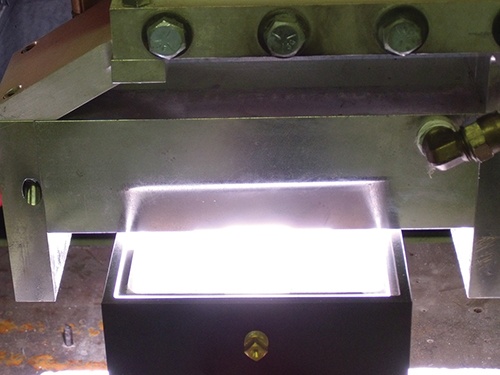
MesoCoat Inc.’s CermaClad technology uses a high-density infrared arc lamp to bond the cladding material to metal surfaces, preventing corrosion for up to 100 years, and extending the lifespan of infrastructure like steel beams and pipes.
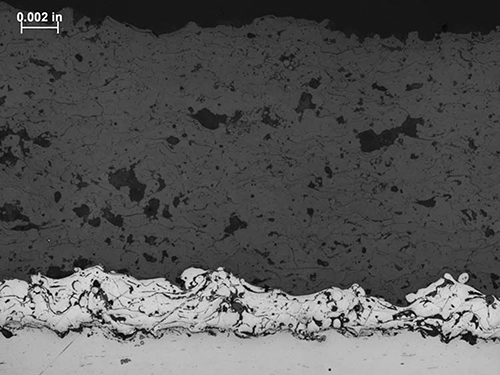
The ZComP 844 nanocomposite thermal barrier coating (TBC) has about half of the thermal conductivity of standard thermal barriers. Applying the TBC to engine components can result in a 50-percent increase in component life as a result of reduced thermal stress.

ZComP 844 TBC extends the life of gas turbine engine components and hardly adds any cost to normal maintenance cycles.








